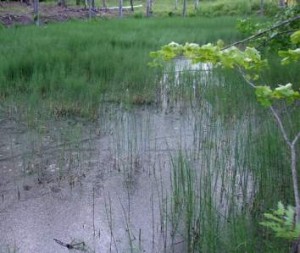
Internet satellite providers have been around for quite a few years but had to overcome many problems and most importantly, deal with maintaining a reliable signal. Do you know how far they have improved?
A number of their past problems had to correct low bandwidth restrictions and high, abysmal rates of disconnections. Today’s satellites are manufactured with quality parts and more powerful therefore helping internet satellite providers, to overcome their own problems and gain equal ground with DSL and cable internet providers.
Artificial Satellites Orbit Earth
Satellites made by man are called artificial satellites whereas natural satellites refers to objects such as our moon. Artificial satellites fall into categories depending upon their purpose or mission, such as the following;
– Scientific research
– Weather
– Communications
– Navigation
– Earth observing
The use of powerful radio transmission signals allows for internet connectivity, and gaining in popularity with their reliability and easy access, no matter how remote or on the road. The improvements in today’s communication satellites can relay digital television programs, telephone calls, broadband and DSL internet connectivity. Access to the world is literally in our hands once we get ourselves that satellite dish, modem and cables.
Fly high, medium, low Orbit satellite signals
Communication satellites can be found to orbit at various altitude orbits, again, depending upon their purpose and travel in one of four types of circular orbits, such as ;
– High altitude, geosynchronous
– Medium altitude
– Sun-synchronous, polar
– Low altitude
Signals that are transmitted are quite capable at providing stability and wide coverage across the globe. They can work together relaying information between each other, and to users on the ground, maintaining a strong signal. Towers with ground satellites are set up on Earth that work with the satellite in orbit, relaying signals via transmission and receivers.
Many businesses will find today’s satellite internet provider to be quite reliable and a truly, superior technological tool whether they are at a fixed address or mobile. Today’s satellite internet providers can bridge the gap between no service, and opening communications for improving economic productivity, and especially during natural disasters when regular cell phone signals are out.

Careers in Satellite communications
The use of efficient satellite instrumentation techniques, computers, and miniature electronic technology in the design and construction of satellites have helped, to pave the way for an alternate source of internet connectivity for those in remote and rural areas.
Satellite internet service providers can now provide organizations with quick and cost effective access to the internet, send and receive communications without being stranded, in an emergency or disaster. Now, that’s quite a feat for us, don’t you think?
Careers in this field can be found in various areas of interest. First, of course working with satellites in orbit, is the Satellite Engineer. He ‘designs the programs’ that controls the orbit of the satellite, and it functions plus more. They are usually hired in defense and aerospace industries.
Other education requirements would be Bachelors degree in Aerospace engineering, Electrical or Mechanical engineering, and Master degrees. Working with satellites will require skills in electronics, electricity, aircraft and helicopter flight dynamics, space flight, maths, working on, or creating new technologies. An exciting, and challenging career choice. Average salaries can reach $117K annually. A Professional Engineer license, and security clearance may also be required.

Other career choices can be found back on Earth too. One can enter the Aerospace Engineer technician program, as an alternative career. These professionals ensure safety of space crafts by building testing equipment, set up simulations, test and compile reports from data with these tests. Average salary for this career ranges up to $66K annually.
Electrical engineers can have interesting career choices too. Designing, creating and testing electrical components for vehicles, communication systems, and EV motors, are areas that need these skill sets. Average salary for this career ranges to about $99K annually. Check with your University of interest plus research job postings, to keep up-to-date with salaries, education requirements, and job trends.
The areas of aerospace may seem intimidating but isn’t that what we thought of high school before starting? Keep faith, and there’s always a tutor to help too. Dream big, you got this. 🙂
Learning in Motion
Reading Resources
What Does an Aerospace Engineer Do?
What Are Some Popular Aerospace Careers?
Aerospace Activities and Lessons
21 Best Graduate Aerospace Engineering Programs
I hope you found this article informative. Please feel free to leave your comments, and share your own observations or experiences. Use the ‘Ask a Question’ form to send a request on a topic of interest to you. It is FREE to subscribe to my RSS feed.
Related –> Fun with Road Travel Communications


